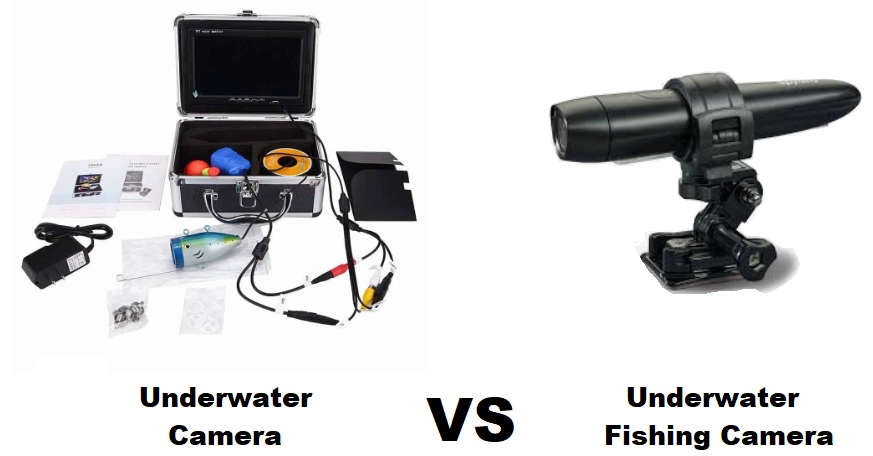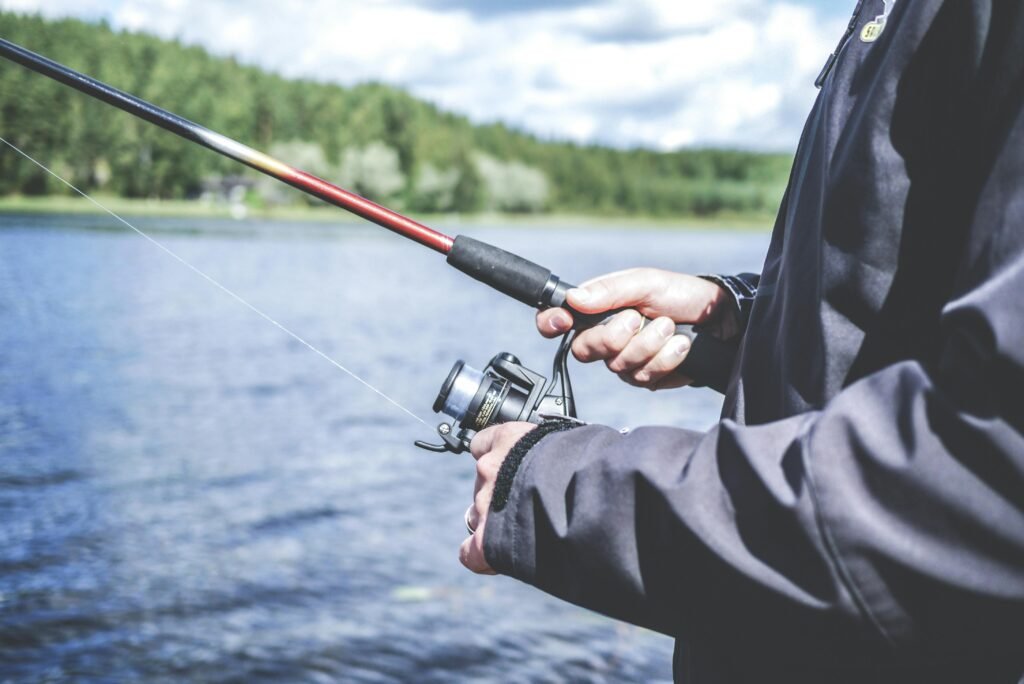Today, I’m excited to share with you my personal journey and passionate love for freshwater fishing as we dive deep into the heart of the aquatic world – the revolutionary fish finder technology. Drawing upon my numerous adventures and encounters, I’ve come to appreciate how these advanced technological marvels have utterly transformed my fishing expeditions. No longer just a simple pastime, fishing has evolved into a fascinating blend of sport and science for me, thanks to the precision and insight provided by fish finders. These devices have not only enhanced my understanding of the underwater environment but have also significantly increased my catch rates, making each trip a thrilling and rewarding experience.
The Leap into Modern Angling
- The first time I clutched a fish finder in my hand, my entire perspective on fishing changed dramatically. It was as if a veil had been lifted from the lakes and rivers I thought I knew so well, transforming them entirely before my eyes. Suddenly, what was once unseen beneath the surface became vividly clear. Depths that had been mere guesses were now meticulously mapped with precision, water temperatures were accurately gauged to the nearest degree, and the fish, once elusive and hidden, were now revealed in their secret hiding spots as if they were waiting to be discovered. It was akin to being granted a magical pair of x-ray glasses, allowing me to pierce through the reflective surface of the water and delve into the mysterious and previously invisible world below. This device not only significantly enhanced my fishing experience by increasing my catches and efficiency but also deepened my connection with the natural world, unveiling the intricate and delicate details of aquatic ecosystems that had been right before me, yet unnoticed.
- These tools, once perceived as bulky, intimidating, and hard-to-understand gadgets, have evolved into sleek, user-friendly devices brimming with cutting-edge features any angler would dream of. With advancements ranging from high-definition GPS mapping to sophisticated sonar technology capable of defining the structures below the water’s surface with astonishing clarity, today’s fish finders are akin to modern treasure maps – guiding adventurers to where X marks the spot with pinpoint accuracy. They allow anglers to not only find fish but to understand their environment, leading to more respectful and sustainable fishing practices. Whether you’re a novice just dipping your toes into the world of fishing or a seasoned pro with years of experience, the evolution of fish finders opens up a whole new world of possibilities, turning every fishing trip into an exciting expedition of discovery.
Sonar Technology: Seeing Beneath the Surface
- At the core of modern fish finding technology lies the sophisticated use of sonar. Mirroring the natural echolocation abilities employed by dolphins and bats, sonar technology works by emitting sound waves that travel through water until they encounter objects, such as the seabed, underwater structures, or schools of fish. These waves then bounce back, providing the sonar device with data that is converted into images of the underwater environment. This not only includes the presence of fish but also offers insights into the underwater landscape, the depth of the water, and occasionally, can even help identify the types of fish that are being detected.
- My initial fascination with this technology quickly grew into a profound obsession as I delved deeper into the nuances of how different sonar frequencies could paint diverse pictures of the aquatic world. High-frequency sonar signals are particularly adept at delivering crisp, detailed images of the bottom terrain and the fish that dwell close to it. This is especially useful in shallow waters where the level of detail can greatly enhance the fishing experience. On the other hand, lower frequencies can penetrate deeper waters, though with less detail, making them suitable for locating fish in deeper regions of lakes, rivers, and oceans. This interplay between frequency and detail has revolutionized the way we understand and interact with the underwater environment, turning fishing into a more efficient and scientifically informed sport.
The GPS Revolution
- The integration of GPS technology into fishing equipment has revolutionized the way I approach the sport. Initially, my use of a fish finder was quite basic, primarily to locate fish in the surrounding waters. However, the advent of GPS technology added a whole new dimension to my fishing expeditions. With GPS, not only could I locate fish, but I was also able to mark waypoints – specific spots where I had success or discovered interesting underwater structures. This capability meant that returning to these “honey holes” where fish were abundant became a simple, hassle-free task, and the daunting nature of exploring vast water bodies suddenly felt manageable.
- Moreover, GPS technology has significantly enhanced the utility of my fish finder, transforming it from a mere tool to detect fish to a sophisticated navigation instrument. With the addition of chart plotting features, my fish finder screen became an invaluable navigation tool, guiding me through uncharted waters with the confidence and precision of a seasoned sailor. This advancement has allowed me to venture into previously unexplored territories, opening up a world of new fishing opportunities and significantly enriching my experience on the water. The combination of locating fish and navigating with ease has truly made GPS technology a game changer in the world of fishing.
Down Imaging and Side Imaging
- The technological advancements in marine navigation and fish finding didn’t just halt at the development of sonar and GPS technologies. The introduction of Down Imaging was a game-changer, providing a crystal clear and detailed view of the underwater world directly beneath my boat. But it didn’t stop there; Side Imaging technology took it a step further by expanding my perspective, revealing the secrets that lay on both sides of my boat over a vast horizontal range. This technology allowed me to see the underwater environment in a way I never thought possible, uncovering features and potential fishing spots that were previously invisible to the naked eye.
- On one particular outing, the power of Side Imaging became strikingly clear when it revealed an intricate underwater structure that I had unknowingly passed over numerous times before. This wasn’t just another piece of the underwater landscape; it was a hidden treasure trove that promised an exciting fishing opportunity. This discovery turned what would have been an average day on the lake into one of the most unforgettable fishing adventures of my life. As I navigated my boat to these newly discovered spots, the results were astonishing. The catches I made that day had my fishing buddies looking on in envy, wishing they had the same success. The day was filled with excitement and a sense of achievement, all thanks to the incredible capabilities of modern fishing technology.
My Personal Tips for Maximizing Your Fish Finder
- Spend Time Learning: Mastering the art of using fish finders is akin to unlocking the full potential of any new piece of technology; it all starts with the user’s understanding. To truly harness the power of your device, it’s crucial to dedicate time to comprehensively learn its features and functionalities. This doesn’t just mean a cursory glance at the manual; it involves thoroughly reading the instructional guide, watching tutorial videos created by experts, and putting what you’ve learned into practice in various environments. The more familiar you are with your fish finder, the better equipped you’ll be at interpreting its data accurately. This knowledge will significantly enhance your fishing experience, allowing you to make informed decisions about where and how to fish, based on the insights provided by your device.
- Understand Your Needs: Given the wide variety of fish finders available on the market, each offering a unique set of features, it’s crucial for anglers to identify which functionalities best align with their fishing style and objectives. This step requires a bit of introspection and research. For instance, some anglers might benefit from high-resolution imaging features, which provide detailed views of the underwater terrain, structure, and precise fish locations, allowing for a targeted approach to fishing. Others might find value in the straightforwardness and broad area coverage offered by traditional sonar, which is often better suited for scanning vast water bodies for potential fishing spots. Understanding your specific needs and how you prefer to fish will guide you in selecting a device that not only complements but enhances your fishing approach, making each outing more productive and enjoyable.
- Experiment with Settings: The default settings on your fish finder are a good starting point, but they might not always be the best choice for every fishing condition. It’s important not to hesitate to experiment with different configurations. For example, adjusting the sensitivity can help detect more details in the water, such as smaller fish or subtle features of the underwater terrain. Likewise, changing the frequency can allow your device to penetrate deeper waters, potentially revealing fish that reside in the depths. By thoughtfully tweaking the settings based on the specific environment and the species of fish you’re aiming to catch, you can discover new aspects of the underwater world that were previously invisible to you, enhancing your fishing experience and increasing your chances of a successful outing.
- Mark Your Spots: Utilizing the GPS feature of your fish finder to mark spots can be incredibly valuable for any angler. Whether you’ve discovered a hotspot brimming with certain fish species, stumbled upon fascinating underwater structures that could hide potential catches, or identified areas rich with heavy vegetation where fish like to feed and hide, marking these locations allows you to efficiently return to them on future outings. This practice not only saves time by guiding you directly to proven fishing spots but also enables you to build a personalized map of productive areas based on your own experiences. Over time, this map becomes an invaluable resource for planning your fishing trips, allowing for strategic and successful fishing adventures.
- Patience is Key: Despite the remarkable advancements in fishing technology, the essence of fishing remains deeply rooted in patience and persistence. Even the most sophisticated fish finder on the market cannot guarantee instant success if these fundamental qualities are absent. It’s crucial to view your device as a tool designed to augment your inherent skills and knowledge, rather than as a magic wand that can replace the need for traditional fishing virtues. Remember, technology is there to enhance the fishing experience, to increase the chances of a successful catch by providing you with valuable information about what lies beneath the water’s surface. However, the traditional virtues of fishing—patience, keen observation, and adaptability—are irreplaceable and remain at the heart of what it means to be a successful angler.
The Final Cast
- Fish finder technology empowers anglers with information and insights that were unthinkable a few decades ago. Yet, as immersive and effective as these gadgets are, they augment—rather than replace—the ancient dance between angler and fish. For me, blending the art of fishing with the science of technology elevates the experience, creating stories and successes I cherish deeply.
Whether you’re a tech enthusiast, a weekend angler, or somewhere in between, there’s a fish finder out there that can open up new dimensions to your fishing endeavors. Remember, the objective is not just to catch more fish, but to enrich the fishing experience—connecting us more deeply to the natural world and its mysteries. Happy fishing!



